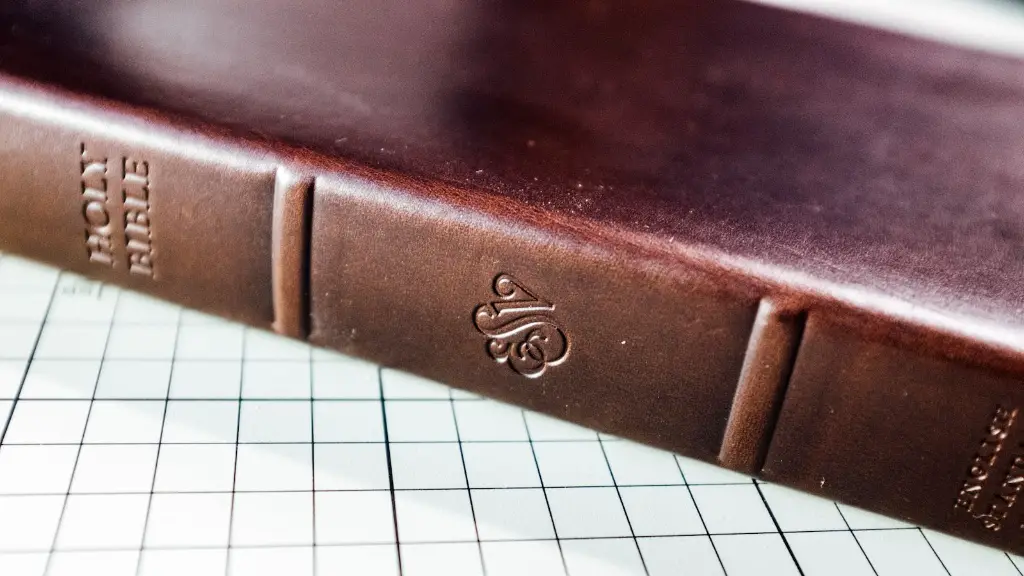Bible Origins and Lilith
Lilith appears in the Bible as a figure in Hebrew mythology and folklore. The earliest attestation of the figure of Lilith, the Mesopotamian female antagonist of Adam and Eve, appears in the Alphabet of Ben Sira, a text from the 9th century BC in the Apocrypha. The Alphabet is usually thought to be a collection of stories and legends, some of which were related to traditions in the Bible. Lilith is depicted as a female demon who intimidates men and steals their breath, as well as being a thief and a seductress. This lore was extended over the centuries, and in Jewish folklore, Lilith is described as a beautiful yet dangerous female demon who seduces men in their sleep and steals the souls of newborn infants. Some scholars suggest that Lilith was created as a composite figure borrowing aspects from other ancient Near Eastern goddesses, such as Ishtar and Inanna.
The Bible does not contain any specific references to Lilith, but it does provide hints and clues of the existence of Lilith-like characters and entities in ancient Israel. For example, there are references in the Bible to female spirits who are not human or divine, such as the she-devil mentioned in Proverbs 30:15-17. There is also a mysterious female figure mentioned in Isaiah 34:14, who is identified by some scholars as a possible reference to Lilith. In other passages, there are references to night spirits and demons and nocturnal creatures, which are often associated with Lilith.
In addition, the Bible includes several stories that involve elements that are similar to the myths and legends of Lilith. For example, there is the story of Hagar in Genesis 16, who is sent away from the home of Abraham and Sarah after Sarah fails to conceive a child. In the story, Hagar is visited by an angel and then returns to Abraham and Sarah to give birth to Ishmael. This is similar to the story of Lilith, who is forced to leave her home and is later visited by angels before returning to give birth to a child.
Nephilim and Lilith
In the Bible, the Nephilim are described as powerful, mysterious beings, often associated with the descendants of the fallen angels. It is generally accepted by scholars that the Nephilim are not mythical figures, but actual people of some kind, although the exact nature of what they were is often debated. Some scholars believe that the Nephilim were a race or group of people descended from the union of humans and divine or demonic entities. This is similar to the ancient Near Eastern mythology of Lilith, who is described as a female demon who seduces Adam and bears his children.
The Nephilim are described in the Bible as giants, as well as warriors and kings. They are also described as men of renown and men of valor. Scholars have argued that these descriptions could refer to natural human characteristics such as strength, bravery and wisdom, or that these descriptions refer to some sort of spiritual power possessed by the Nephilim. This could be connected to the demonic or angelic origin of the Nephilim.
Another point of view is that the Nephilim were a hybrid race, like the offspring of Lilith and Adam. This theory is based on the fact that the Nephilim are described in the Bible as being “heroes” and “mighty men”. This could suggest that they were of a supernatural origin, created through the union of human and demon or angel. Lilith could be seen as the mother of the Nephilim, while Adam would be their father.
New Testament and Lilith
The New Testament does not directly reference Lilith, but there are a few passages which could possibly describe her and her influence. One passage that could be interpreted as a reference to Lilith is found in the Book of Revelation, in which a spiritual battle between the forces of good and evil is described. In this battle, the “dragon” is described as being defeated by the Archangel Michael, and this is seen by some to be a reference to Lilith.
The serpent that tempts Eve in the Garden of Eden is also believed by some to be a reference to Lilith. The serpent is identified as Satan in the New Testament, and it is possible that Satan and Lilith could be one and the same. In the Book of Isaiah, Lilith is also described as a “fleeing, serpent-like creature”, which could be seen as a reference to the serpent in the Garden of Eden.
Conclusion
The Bible does not contain any direct references to Lilith, but there are a number of passages that could be interpreted as referencing her or her influence. Lilith is an important figure in Hebrew mythology and folklore, and her origins are believed to be in ancient Near Eastern mythology. It is generally accepted by scholars that the Nephilim were a hybrid race descended from the union of humans and divine or demonic entities, and some believe that Lilith was the mother of the Nephilim. It is possible that the serpent in the Garden of Eden, as well as the dragon in the Book of Revelation, are references to Lilith.
Use of Lilith in Jewish Culture Today
In modern Jewish culture, Lilith is often considered an important figure in folklore and mythology. Lilith is often associated with aspects of the feminine divine, such as female empowerment, sexuality, seduction, and the darker side of nature. Despite her origins in ancient Near Eastern mythology, Lilith is an important figure in the modern Jewish faith and a popular figure in modern culture.
The figure of Lilith has become so popular in modern Jewish culture that she is now often included in modern artwork and literature. In recent years, Lilith has become a symbol in Jewish culture. She is used to represent the power of women, to explore the darker side of femininity, and to challenge existing notions of gender roles and expectations. Lilith is also used in popular culture to explore themes of otherness, sexuality, empowerment, and rebellion.
In addition, Lilith is an important figure in the realm of occultism and spiritualism. She has become a symbol of female empowerment and her energy is often invoked during rituals and spell-casting. Lilith is seen as a powerful and divine figure who can be called upon to provide protection, healing, and luck.
Gender Issues Around Lilith
Lilith is not just a mythical figure, she is a powerful symbol in modern society. Lilith has long been used as a symbol of female entitlement and power, as well as to challenge gender roles and expectations. Lilith has become a popular figure in modern feminism as a symbol of female strength and autonomy. In addition, Lilith is often associated with sexuality and the darker side of femininity.
Lilith is used to challenge the notion that women are passive and merely victims of societal expectations. Lilith is celebrated for her acts of rebellion and for her refusal to conform to the traditional gender roles imposed on her by society. She is praised for her power and sexual autonomy, as well as for her courage and strength in the face of adversity. Lilith is thus seen as a powerful symbol for female empowerment.
Lilith in Popular Culture
Lilith has become a popular figure in popular culture, appearing in books, television, movies, and video games. She is an important character in The Sandman comic book series and is the main antagonist in the TV series Supernatural. She is also the namesake of the Lilith Fair, a popular music festival, and has been featured in several horror movies.
In addition, Lilith is often featured in songs, such as the popular rock song “Lilith” by Led Zeppelin. Several authors have also written books about Lilith, exploring her as a powerful figure in mythology and folklore, as well as exploring her role in modern society.
Lilith has become a popular figure in modern culture and her legacy continues to live on in pop culture today. She is a powerful symbol for female empowerment and her influence can be seen in a variety of popular books, television shows, movies, and music.
Psychological Significance of Lilith
Lilith has become a powerful symbol for female power and autonomy, and she is seen as a positive, empowering figure in modern culture. However, Lilith is also a symbol of darkness and fear, and her influence and power can be seen in our subconscious.
In psychoanalytic thought, Lilith is often used as a tool for exploring the darker sides of the human psyche. Her association with the darker aspects of femininity and sexuality, as well as her mythic power and autonomy, are themes often explored in psychoanalytic theories.
In addition, Lilith is often used to explore themes of mortality, death, and the Shadow Self. Lilith is seen as a figure who embodies the subconscious or Shadow Self, that part of the psyche which is buried deep within our subconscious. She is a powerful figure who can awaken either courage or terror in us, and she is a reminder that we all possess profound depths of power and darkness.
Lilith is thus seen as a powerful and important mythic figure in our modern age, and her influence and significance can be seen in a variety of disciplines, from folklore and mythology to psychology and popular culture. She is a powerful and compelling figure who speaks to us in many different ways.


